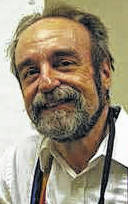
Last week, we left 70-year-old Galileo on June 22, 1633, as he knelt before the Catholic Church’s Holy Inquisition. He abjectly confessed his “error” in supporting Copernicanism, the belief that the sun, not Earth, is at the center of the solar system.
The Inquisitors convicted Galileo, but not for supporting the sun-centered theory. Instead, they found him guilty of violating Cardinal Barberini’s 1616 “instruction” to cease all public support of Copernicanism. His work, “Dialogue Concerning the Two Chief World Systems,” published in 1632, violated that agreement and managed to insult Pope Urban VIII in the process.
However, the Inquisition did not condemn Galileo to death. Instead, they sentenced him to life imprisonment, which he was not required to serve in some dank prison. Instead, they sentenced him to house arrest at his villa in Arcetri, a village near Florence, Italy.
The way most people tell the story, Galileo rose to his feet and whispered, barely discernibly, “E pur si muove,” “Still it moves,” referring to Earth’s orbit around the sun.
Galileo’s act of verbal defiance has achieved mythic status in the minds of astronerds like me. And that’s what the story probably is: a myth. Galileo was undoubtedly stubborn and irascible, but it’s doubtful that he would have done something so foolhardy with his life on the line.
Galileo’s recantation was likely the result of a negotiated settlement. The church let him off lightly and even allowed him to continue his research as long as it was far removed from Copernicanism.
Galileo appears to have honored his part of the bargain. He abandoned his telescope work in favor of experiments with the mysterious force that draws things together, a force that we moderns call gravity.
By the time of Galileo’s trial, he was suffering from severe bouts of arthritis. More significantly, he was also already afflicted with significant vision loss that led to his eventual and complete blindness by 1634.
Thus, Galileo couldn’t have pursued his telescopic observations in any case. Even the simple act of kneeling before the Inquisition must have been physically agonizing.
Given the total solar eclipse coming up in April, we should probably discuss another common myth associated with Galileo’s observations of the sun. It is always dangerous to your vision to observe the sun directly. Observing the sun through a telescope, even a ‘scope as small as Galileo’s, is catastrophic to your vision.
However, Galileo’s blindness probably did not result from his telescopic observations of the sun.
A quarter of a century before his eventual blindness, Galileo had observed the sun extensively. He had discovered sunspots and used them to determine the sun’s rotation, yet another refutation of the old Ptolemaic Earth-centered model of the cosmos.
He had not observed the sun since that time. During his period of solar observations, Galileo did not look through the eyepiece unless the sun was setting or rising, which would lessen the adverse effects.
Mostly, he used telescopic projection, a method still in use by telescopists today.
Here is an excellent description of the technique as described by one of Galileo’s star pupils and assistants, Benedetto Castelli:
“Direct the telescope upon the sun as if you were going to observe that body. Having focused and steadied it, expose a flat white sheet of paper about a foot from the concave lens; upon this will fall a circular image of the sun’s disk, with all the spots that are on it arranged and disposed with exactly the same symmetry as in the sun.”
Modern historians, notably D. Sobel in Galileo’s Daughter, argue that “… Galileo became blind at the age of 72, from a combination of cataracts and glaucoma.” Of course, it’s quite possible that Galileo’s cataracts could have been exacerbated by his earlier solar observations, but it is unlikely that they were the direct cause of his blindness.
Galileo’s light sentence suggests that the Catholic Church was well aware of Galileo’s intellectual gifts and his pathetic physical plight.
Ironically, the modern world owes a debt of gratitude to the Catholic Church. The verdict and the subsequent punishment turned out to be a watershed in the history of science — but not perhaps in the way one might expect.
But that’s next week’s topic.
Tom Burns is the former director of the Perkins Observatory in Delaware.

